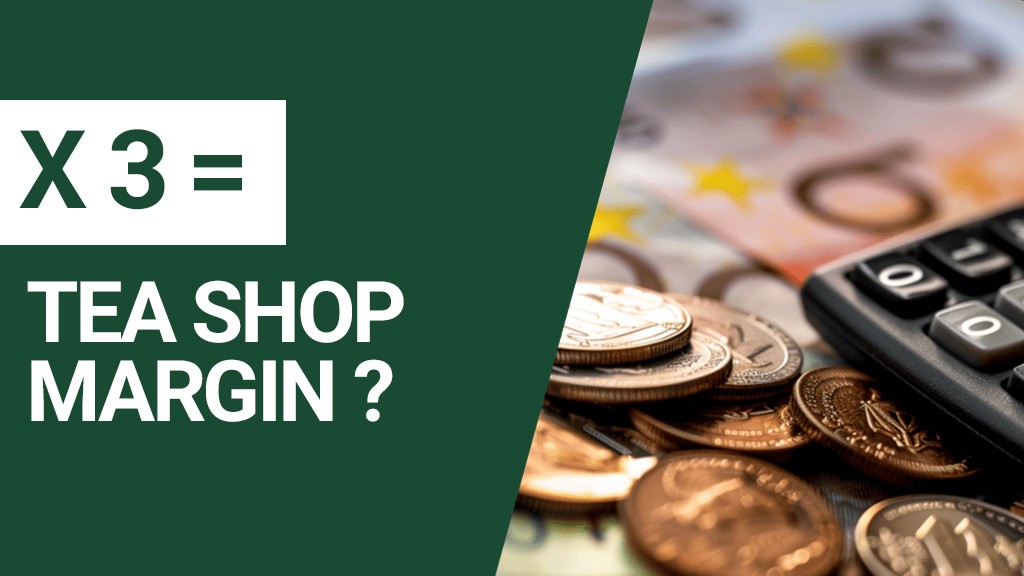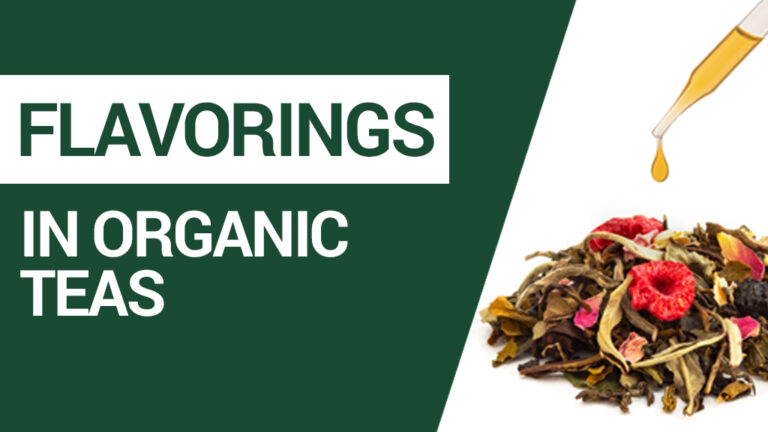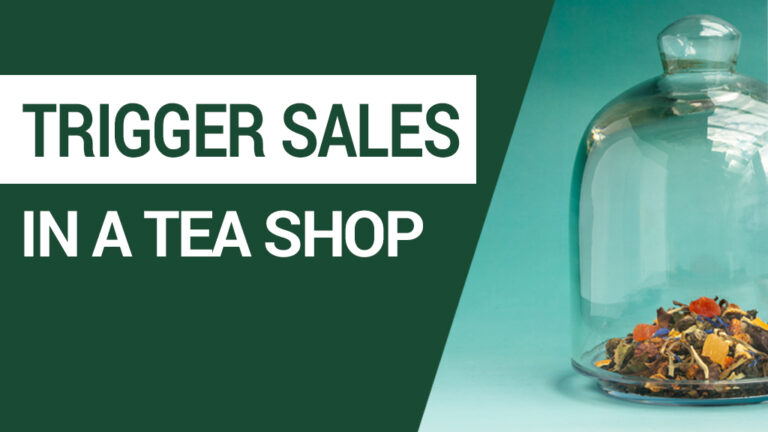One of the key elements in running a successful tea shop is making a fair margin.
But you might wonder: Is there a standard margin applied by prosperous stores? Can I use it as a rule every time? Does it fit all types of tea shops? If not, what are the exceptions?
Let’s find out…
Table of contents
ToggleThe basic pricing rule for an independent tea shop
If you had to remember 1 number, it should be this one:
x3
It means multiplying by 3 the purchase price from your supplier. So for simplification reasons, we don’t talk so much about margin here, but rather about a factor.
And the basic rule is a “factor 3”.
Example:
- You purchase 1 kilogram of Blue Earl Grey from your tea supplier for 24,90€ (VAT excl.).
- It means that 100 grams cost you 2,49€.
- Multiply by 3 to get your selling price to your customers: 7,47€.
Wait a minute… How about VAT?
You’re right. I excluded taxes from the calculation.
If you’re a professional, you’ll probably deduct VAT from your purchases and collect it from what you sell. So, you will need to add VAT to the 7,47€.
And the rate will depend on where you operate. In France, the VAT rate for dried loose tea is only 5,5%. In Germany, 7%. And in the UK, most foodstuff items have no VAT at all!
But if I were to operate in France or Germany for example, I would round it up at 7,90€.
When to apply the rule?
Saying the factor 3 rule fits all situations would be misleading or at the very least oversimplifying.
And that’s why I need to clarify the following:
Apply it to standard references
Factor 3 ( x3) applies to standard references like tea blends, not single-estate teas.
Standard tea blends are common products like Earl Grey, green tea ginger lemon, green tea mint, ayurvedic blends, etc. It also concerns pretty much all flavored teas.
Your supplier will probably sell them to you between 15€ and 30€ per kilo (VAT and rebates excluded).
Now, for rarities (single-estate teas, sometimes referred to as “Grands Crus”), tea shops usually price them using a factor of 2 to 2,5.
It concerns references like Jasmin Dragon Pearls, premium Darjeeling 1st flush, Anji Bai Cha, Gyokuro, Himalaya Shangri-La…
Apply it to standard packaging solutions
Factor 3 applies to loose tea sold in standard packaging solutions like doypacks, not tins. The tin solution usually adds a premium between 2€ and 3€ per item.
When using doypacks, the standard filling is around 100 grams. The fewer grams you pack per item, the higher should be the factor. Incidentally, if you pack more than 100 grams per package, you should adapt the factor.
This is especially true when the customer can choose the grammage and can compare prices per kilo in your store. In Germany for example, many tea stores display 3 prices for 50g, 100g, and 200g. More rarely I also see prices for 250 and 500 grams.
The more the customer buys, the lower the price per kilo.
Great for independent tea shops, not for franchise models
The word independent is key.
What I mean is that it does not apply well to franchisees distributing renowned brands.
On several occasions, I had the opportunity to consult the pricing conditions of famous brands to their franchisees.
In general, the franchised stores applied a much lower factor than independent tea stores (around “factor 2”).
Depending on rebate conditions (based on volume per order), the factor could be improved a bit, but not to the extent of what independent tea shops practice.
Quick side note here. I still consider that becoming a franchisee can be an attractive model.
I see 3 main reasons:
- It’s simpler: You don’t take care of all the marketing and branding aspects. The shop has only one job: to sell the products developed by the brand.
- The brand attracts customers: The promise behind becoming a franchisee of a renowned brand is to get traffic, which means higher sales volume.
- The brand value can add a premium: The factor might indeed be lower. But this brand may be in a position to price a premium for each article. So even with a lower factor, you compensate by making more money per item sold.
A franchisee model is not better or worse. It depends on how you define your project and how much freedom you want.
How to improve your factor over time?
If you start in the business, you will probably have no rebate conditions from your tea supplier.
You will be quite happy to negotiate payment terms with your supplier after a few orders. FYI, some accept better payment conditions from the 2nd order onward.
But you can improve your margins over time.
If you make regular orders, pay your invoices on time (yes, it’s important – to build trust with your supplier), and increase volume (not always mandatory), you might be in a position to negotiate rebate conditions.
It will de facto improve your margin, assuming you don’t lower your pricing.
The limitation of “Factor 3” and the risk of commoditization
Okay, there is one last thing I feel is essential to share…
“Factor 3” has one big limitation: it only gives you the commodity price of your product.
What does it mean?
Commoditization means you sell the product at a price that covers your costs but leaves you with little to no profit in the end.
At this price, your business can survive and generate a decent revenue. But you won’t thrive either.
How to thrive?
By building a brand.
I see it like this. An independent tea shop is not a brand.
As consumers, when we buy a brand, we pay an extra. We’re willing to pay more than the commodity price because we perceive the brand as something more than just a commodity.
And it resides in what the brand represents to us (the consumer):
- The commonly shared values we have with the brand,
- What the brand tells about us,
- To what group do we belong to when buying it,
- How does it make us feel using this brand.
And this applies to shoes, energy drinks, computers, tea, coffee, etc.
As Seth Godin puts it:
“The value of a brand is how much extra am I paying above the substitute.
And if I’m not paying extra, you don’t have a brand”.
And the substitute is generally priced as a commodity. Most independent tea businesses sell a commodity.
Hence, most independent tea shops are substitutes for renowned brands sold in specialized stores.
It might be tempting to say that the substitute is the supermarket alternative.
It’s not.
The consumer buying from a tea shop doesn’t want a supermarket product. They want something different. And he usually chooses between an independent tea shop and a store from a renowned brand.
It’s not about quality either.
It is effortless for an independent tea store to sell the same quality as a premium brand. You can even have access to better quality, no doubt.
But what’s missing is the added value the brand should add, enabling it to charge a premium.
Key Takeaways
Let’s wrap it up.
Most tea shops usually multiply by 3 the purchase price of a loose tea to obtain the final selling price.
Applying this rule has advantages:
- It’s a standard that many other independent shops apply. For you, it feels safe and you can’t “do wrong”,
- It’s a reminder to never underprice. Too many times have I seen entrepreneurs hoping to disrupt a market with lower pricing. Yes, you can start your business by applying a factor 2. But I tell you this is not the recipe for a thriving business, at least not in the constraints of an independent tea store.
Factor 3 is not so much a rule as it is a guide, a benchmark that signals the commodity price of quality products sold in a specialized store like a tea shop.
Can you break away from this rule? Yes.
By all means, try and make your own experience.
A friendly reminder: Only added value will enable you to charge a premium (above factor 3). You achieve that by building a brand.




